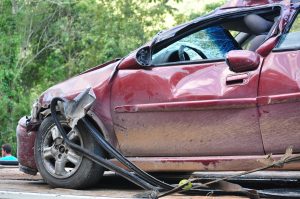
Dealing with Injuries in Accidents: Your Immediate Action Plan

What exactly should one do when faced with such a distressing situation?
Thousands of individuals across the United States find themselves grappling with the aftermath of car accidents each and every day. This unsettling reality is a consequence of several factors, including the sheer volume of motor vehicles populating the roadways and the extensive number of drivers navigating these thoroughfares. It’s this confluence of elements that makes the United States stand out, experiencing more car accidents on an annual basis than any other nation.
We should not be swayed by the cold, numerical nature of these statistics; let’s remember that behind each figure lies a unique story, an individual or a family whose lives were abruptly altered by these incidents. While car accidents may be pervasive, they are far from routine for those who endure them. The emotional and physical turmoil can be overwhelming, often leaving accident victims in a state of shock and disarray. It’s precisely during these moments of vulnerability that knowing the appropriate steps to take becomes crucial, especially when injuries are involved. A firm grasp of what actions to undertake after being involved in a car accident with injuries not only ensures that all parties receive the necessary medical attention but also safeguards the legal rights of everyone affected.

Where to Start When Involved in an Accident Where Someone Is Injured?
Adhering to a prescribed set of steps can help manage the chaos while simultaneously ensuring compliance with traffic laws and regulations. Here’s a comprehensive guide to navigating the aftermath of a car accident where injuries have occurred:
1. Stay at the Scene: State laws vary, but universally, it is a fundamental requirement for all drivers involved in an accident to remain at the scene. Take Florida, for example. According to the state’s laws, any driver implicated in a crash, whether it involves injuries or only property damage, is obligated to stay at the accident site. Leaving the scene prematurely can result in severe consequences, potentially leading to charges of a second-degree misdemeanor and a hefty fine of $500. While it is imperative to wait for the arrival of law enforcement, safety should be paramount. If circumstances permit, moving vehicles to the side of the road to allow for the safe passage of traffic is a prudent move. However, in situations where safety is compromised, such as being stranded on active railroad tracks, the best course of action is to relocate to a secure area and await the arrival of the authorities.
2. Call 911 Immediately: Time is of the essence. Swiftly dialing 911 ensures a prompt response from law enforcement officers who can help manage the situation. In cases where the accident has led to road blockages, the presence of law enforcement personnel becomes crucial for directing traffic, especially if someone’s injuries are so severe that moving them is not a viable option until medical assistance arrives.
3. Attend to Injuries: Irrespective of one’s medical expertise, the legal obligation to assist injured individuals is paramount. Rendering aid in this context doesn’t imply performing complex medical procedures. Rather, it entails taking appropriate measures to ensure that those injured receive the necessary medical attention. This could be as straightforward as calling for an ambulance and ensuring that the injured party is attended to by medical professionals.
4. Seek Immediate Medical Attention: Erring on the side of caution is wise. Treating every accident as if injuries have occurred until proven otherwise is a prudent approach. Unless one possesses a medical background, it might be challenging to identify symptoms of internal injuries or organ damage, which might not be immediately evident. For instance, individuals involved in head-on or rear-end collisions might be at risk of sustaining whiplash, the symptoms of which can take up to 24 hours to materialize. Adopting the assumption that hidden injuries might exist prompts the necessary actions to secure comprehensive medical care for all individuals impacted by the accident.
5. Document the Incident: Relying solely on the authorities or other parties to gather crucial information post-accident can be risky. If physically able, taking charge of documenting the scene can prove immensely beneficial. Here’s how:
- Photographic Evidence: A picture is worth a thousand words, they say. Photographs have the unique ability to establish the sequence of events, shedding light on who might be at fault and what contributing factors played a role. Consider a scenario where strong winds led to the displacement of a large object onto the road, potentially influencing the accident. This kind of evidence can be pivotal in determining liability.
- Video Footage: Beyond photographs, videos can provide a comprehensive view of the accident scene. These videos can help pinpoint the precise location of each vehicle involved, their distances from each other, and their proximity to significant landmarks. This data can be crucial in establishing key factors such as whether a driver was speeding or attempted to brake, which could be vital in establishing negligence.
- Notes and Witness Information: The aftermath of an accident can be disorienting, and crucial details might slip through the cracks. Taking notes provides a reliable record of events, preventing memory gaps. Furthermore, gathering contact information from witnesses can be invaluable, as their statements could play a pivotal role can be found by witnesses in establishing fault or bolstering your claim if legal action is pursued.
- Notify Relevant Parties: Promptly notifying your insurance company about the accident enables them to initiate an investigation and potentially provide appropriate settlements. Additionally, if the situation warrants, informing your lender is advisable. Especially if your vehicle is a total loss but you still owe money on it.
- Legal Guidance: Seeking legal guidance is a prudent step. Contacting a law firm such as Kemp Law Group, can provide you with a wealth of insight and assistance during this critical juncture. They can offer a free consultation and guide you through essential post-accident steps, ensuring that costly mistakes are avoided and that your legal rights are upheld.

Florida’s No-Fault Law and Its Implications on Accidents:
Understanding the implications of Florida’s no-fault law is paramount. This legal provision mandates that all drivers carry personal injury protection (PIP) insurance, covering a portion or the entirety of medical expenses arising from an accident. This means that even if you were not at fault for the accident, your insurance will still cover certain medical bills. For less severe accidents, victims can often resolve their claims with their insurance provider, receiving the necessary funds to cover medical and property damage expenses. However, in cases of more serious accidents, legal action against the party at fault might be necessary to seek appropriate compensation.
Leveraging Legal Expertise:
A seasoned car accident attorney can prove to be an invaluable ally during this trying period. Your attorney not only guides you through the necessary actions at the accident scene but also serves as a critical reminder not to accept responsibility for the accident. The shock and trauma that often accompany accidents can cloud one’s judgment, making it imperative to have a clear-headed advocate by your side. Moreover, a thorough investigation by legal professionals can uncover critical factors that might remain hidden otherwise. For instance, if you’ve been involved in an accident with a driver operating a company vehicle, records indicating inadequate maintenance could shift liability to the company. A comprehensive investigation ensures that the party responsible is held accountable for their actions.
In conclusion, the realm of car accidents is fraught with complexities, emotions, and legal intricacies. Navigating these turbulent waters requires a level-headed approach, a firm grasp of the legal landscape, and a commitment to securing the best possible outcome for all parties involved. By adhering to a structured set of steps, seeking timely medical attention, meticulously documenting the incident, and enlisting the expertise of a car accident attorney, individuals can hope to navigate the aftermath of an accident involving injuries with a sense of purpose and resilience. Remember, it’s not merely about arriving at the destination unscathed; it’s about emerging from the journey stronger and better prepared for whatever lies ahead.
-
November 1, 2024
Hit-and-Run's in Pensacola, Florida -
November 1, 2024
Personal Injury Protection in Pensacola, Florida -
November 1, 2024
Personal Injury Lawsuits in Pensacola, Florida -
November 1, 2024
Personal Injury Cases in Pensacola, Florida
Contact Us
About Your Case
We're ready to fight on your behalf. Request a free, no-risk consultation with our attorney's today.


